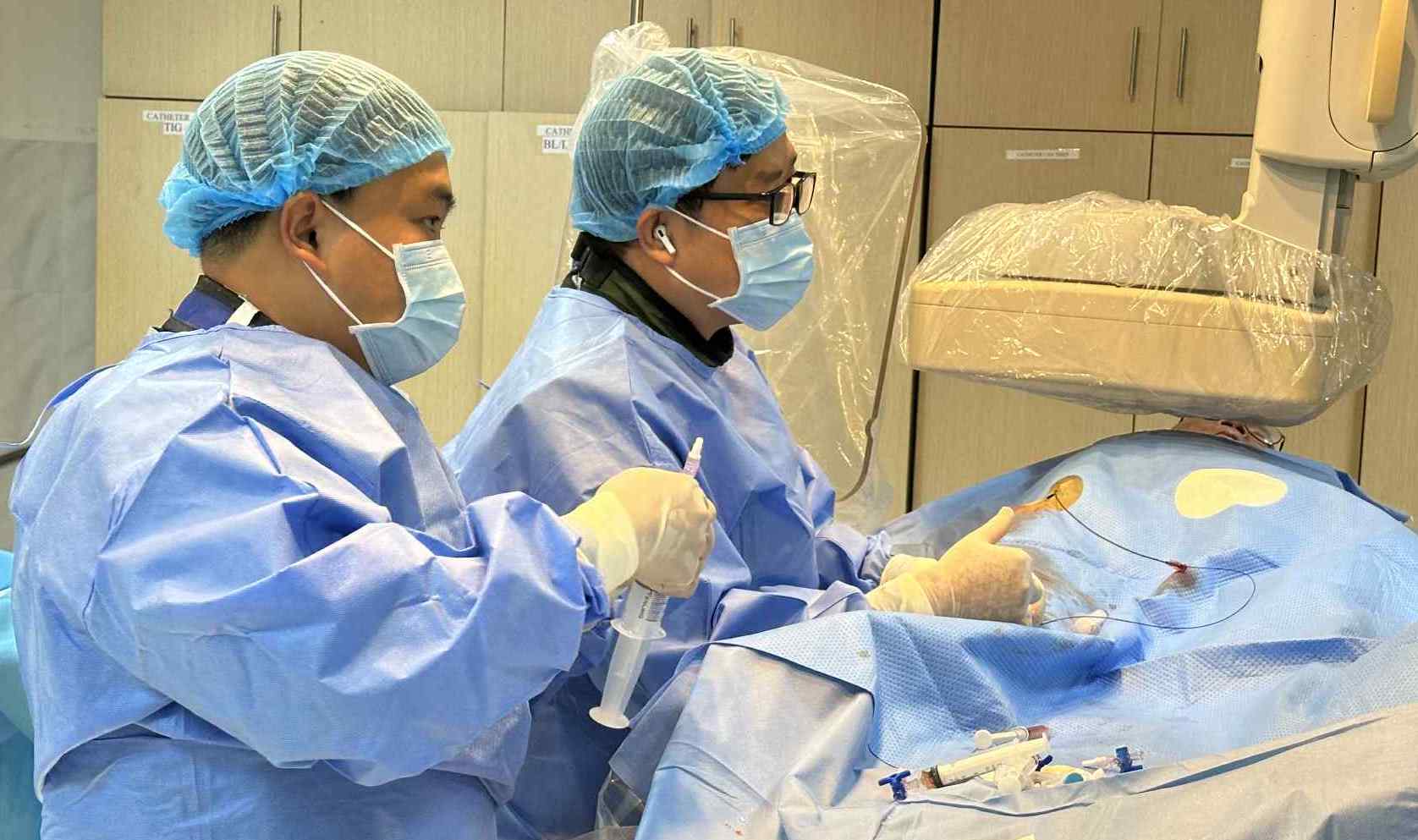A 20-year-old man with polycystic kidney disease affecting both kidneys and his liver developed hypertension. Doctors recommended an MRI brain scan to check for aneurysms, a common complication. The scan revealed a small aneurysm, measuring 2x3 mm, with a regular, round shape and a small 2 mm neck, in the left middle cerebral artery. Due to its small size, doctors advised monitoring and blood pressure management with medication. However, concerned about the diagnosis, the young man opted for early DSA intervention. Tragically, he died due to complications from the unsuccessful procedure, which caused the aneurysm to rupture and led to a brain hemorrhage.
In contrast to this hasty decision, some patients are overly complacent, delaying treatment and facing severe consequences. A 32-year-old woman experienced headaches and underwent an MRI, revealing a 10x5 mm multilobular aneurysm at risk of rupture. Ignoring medical advice for intervention, believing herself to be young and healthy, she experienced severe headaches and vomiting a few days later, quickly falling into a coma. The ruptured aneurysm caused a subarachnoid hemorrhage, a severe type of stroke with a high mortality rate.
These two cases highlight the importance of a balanced approach to brain aneurysm management – neither complacent nor hasty. According to Associate Professor Nguyen Huy Thang, Vice President of the Vietnam Stroke Association and Head of the Department of Cerebrovascular Diseases at Nhan Dan 115 Hospital, brain aneurysms are relatively common, affecting an estimated 2-3% of the population, with higher prevalence in older adults. This translates to approximately 2-3 million "ticking time bombs" among Vietnam’s 100 million people. The incidence of subarachnoid hemorrhage is about 6-10 cases per 100,000 people, meaning only one in over 3,000 brain aneurysm cases results in a rupture.
Several factors increase the risk of rupture, including age, hypertension, smoking, and family history of ruptured aneurysms. Size is the most critical factor in determining treatment. Surgical or endovascular intervention is recommended for unruptured aneurysms larger than 12 mm, especially in younger patients or those with a family history.
Professor Thang advises caution with aneurysms measuring 7-12 mm, as there is no conclusive evidence favoring intervention over conservative management. Early intervention may be considered for aneurysms located in high-risk areas. These patients should undergo aneurysm size monitoring every six months. The decision for early intervention depends on factors like age, family history, aneurysm location, and growth rate.
Dr. Tran Minh Thieu, from the Department of Diagnostic Imaging at Trung Vuong Hospital, agrees that not all aneurysms require immediate intervention. Small, stable aneurysms typically need only blood pressure control and regular monitoring. However, large, irregularly shaped aneurysms or those with warning signs warrant intervention to mitigate the risk of sudden brain hemorrhage, death, or severe disability. Even before rupturing, large aneurysms can cause neurological compression, leading to blurred vision, drooping eyelids, or cranial nerve palsy.
Intervention is mandatory for ruptured aneurysms. For unruptured aneurysms, Dr. Thieu recommends close monitoring of those larger than 7 mm in the anterior circulation or larger than 5 mm in the posterior circulation, especially if they have an irregular shape, wide neck, multiple lobes, or thin walls. Intervention is also considered if patients experience neurological compression or have multiple risk factors for rupture, such as hypertension, smoking, or a family history of ruptured aneurysms.
 |
Dr. Tran Minh Thieu (inside) and a colleague in the intervention room. Photo courtesy of the doctor |
Dr. Tran Minh Thieu (inside) and a colleague in the intervention room. Photo courtesy of the doctor
Three treatment options exist for unruptured brain aneurysms: surgical clipping, endovascular coiling, and conservative management. Studies show that proactive surgical clipping or coiling before rupture carries a 3-10% risk of disability and a 1-2% risk of mortality. The mortality risk may be higher for posterior circulation aneurysms or large aneurysms.
Conservative management involves blood pressure control and abstaining from tobacco and alcohol. Crucially, it includes aneurysm monitoring with non-invasive vascular imaging techniques like MRI, MRA, or CTA every six months or a year to assess growth.
"For aneurysms smaller than 7 mm in the anterior circulation, patients must weigh the very low risk of rupture against the risks of mortality and disability associated with intervention," Dr. Thang explains.
There's no evidence that antiplatelet or anticoagulant medications increase the risk of aneurysm rupture. Therefore, Professor Thang recommends against discontinuing these medications when needed for other purposes.
Dr. Thieu advises high-risk individuals, such as those with a family history of ruptured aneurysms or polycystic kidney disease, to undergo proactive screening. Others, including those with long-term hypertension, smokers, heavy drinkers, or severe atherosclerosis, should also be checked. To reduce the risk of aneurysm formation and rupture, it's essential to control blood pressure, quit smoking, limit alcohol consumption, maintain a healthy diet, prevent high cholesterol, and exercise regularly.
Le Phuong












